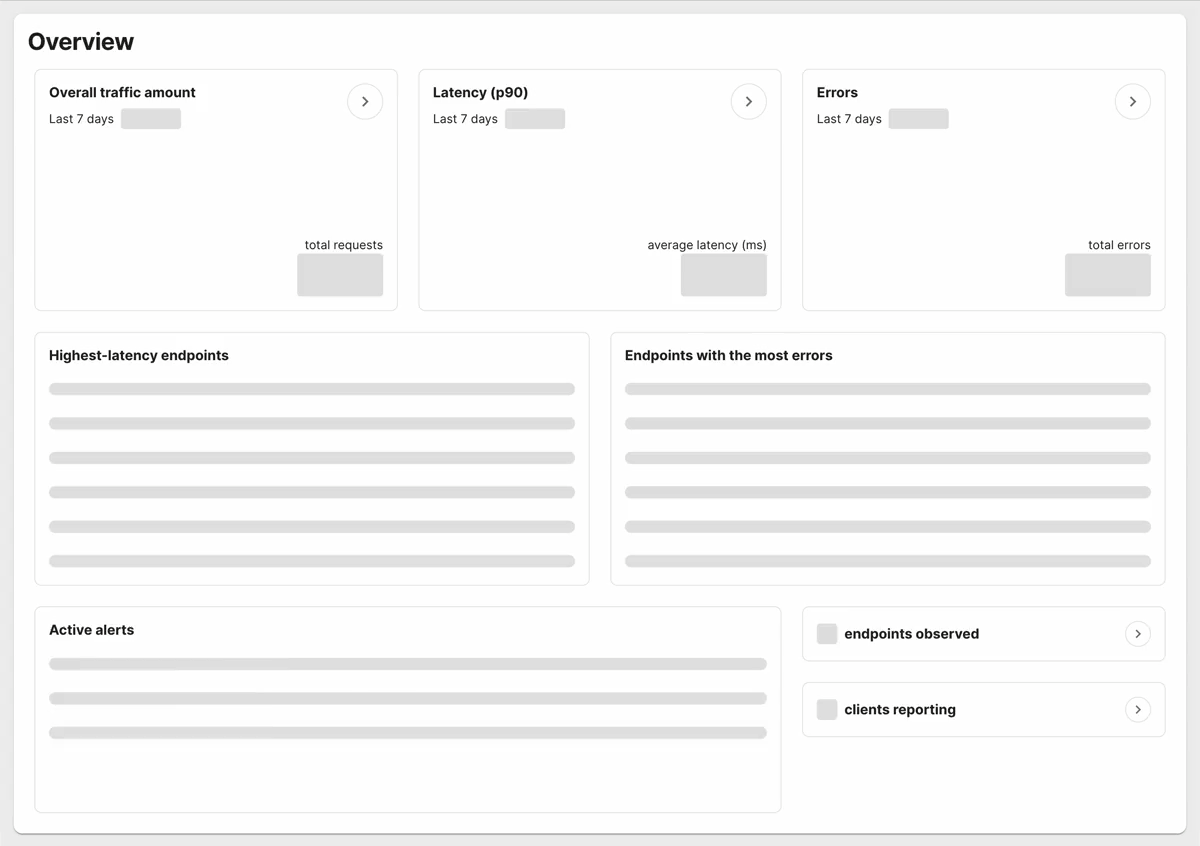Welcome! 👋
The fastest and easiest way to understand your APIs

Built for busy developer teams who don't have time to become experts in monitoring and observability, Akita makes it possible to quickly discover all your API endpoints, see which are slowest, and learn which have errors. No SDKs or code changes necessary.
- Get plug-and-play API monitoring. Explore and share per-endpoint volume, latency, and errors. Set per-endpoint alerts.
- See API endpoints. Automatically get a searchable map of your API endpoints in use. Explore by latency, errors, and usage. Export as OpenAPI specs.
Drop Akita into your system to understand your application’s behavior, without having to instrument code or build your own dashboards. (See all our supported tech stacks list.)
Many users have also been able to try us out easily in local dev environments because our agent sends no payloads to the Akita cloud. See our Data Access & Handling Policy for more.
Looking for a Quick Demo?
Check out our Chrome Extension: OpenAPI Spec Generator.
Join Our Beta
We're in open beta and would love to have you give us a try! The Akita beta works for REST APIs and runs best on Docker, container platforms, and Kubernetes. Get started for free here.
Updated almost 3 years ago